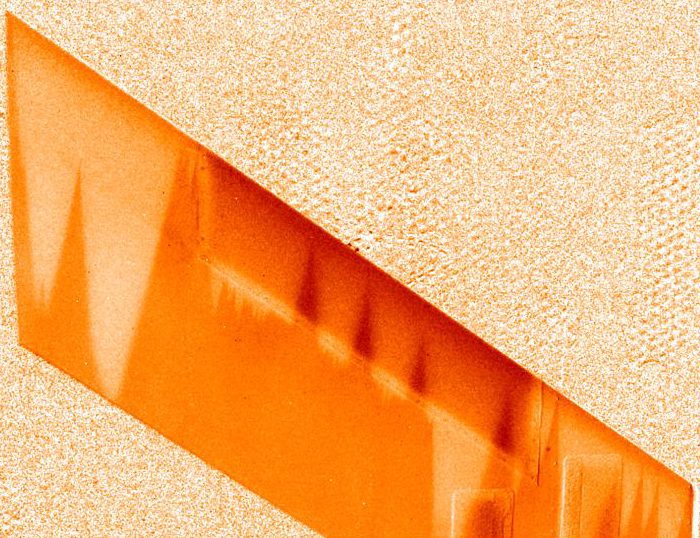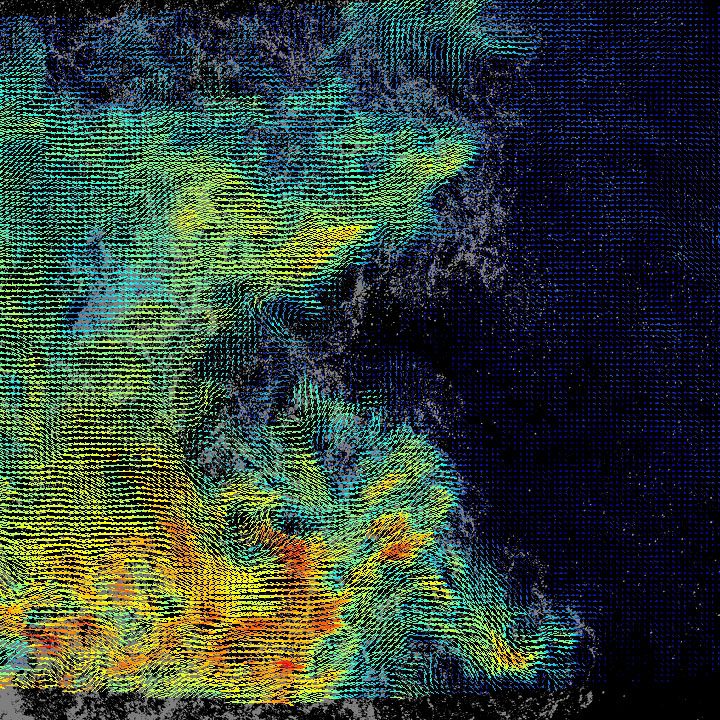Flow
Wind tunnel testing is used to investigate many different types of flow conditions and aerodynamic features. There are many traditional ways to measure these, including using strain gauge balances to measure the forces, pressure taps for surface pressure data, hot films for thermal measurement, and inclinometers for positional changes.
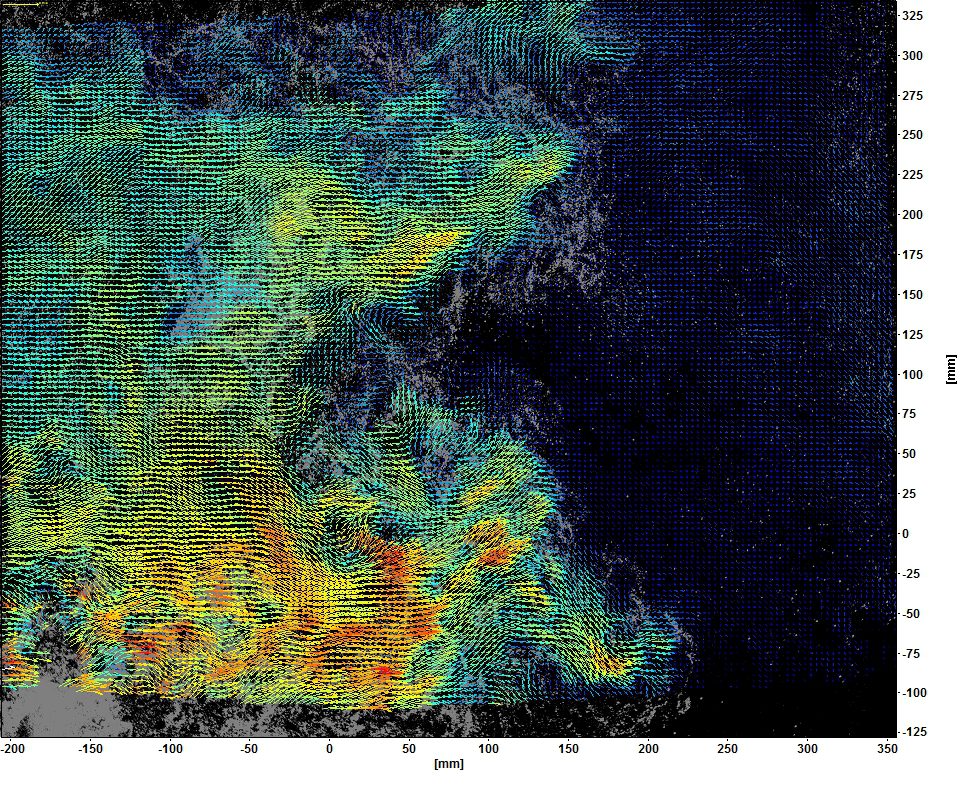
However, optical techniques can provide additional information across a wider spatial area. ARA has experience with a wide range of optical techniques across all of its research facilities and these are used to compliment the traditional data gathering methods, providing a greater understanding of complex flow conditions.
Acenaphthene Sublimation
Acenapthene sublimation is a standard visualisation technique used in the ARA Transonic Wind Tunnel (TWT) to detect the position of transition from laminar to turbulent flow on the model surface. It is an effective tool for checking the performance of model transition bands or dots, which are used to fix the point of transition at a desired location on the model.
The model surface is prepared by spraying a solution of naphthalene crystals onto the area of interest. The tunnel is run at the desired condition and the change in flow at the point of transition causes the crystals to be removed behind the point of transition. This can then be imaged post-run as clearly shown in this image.
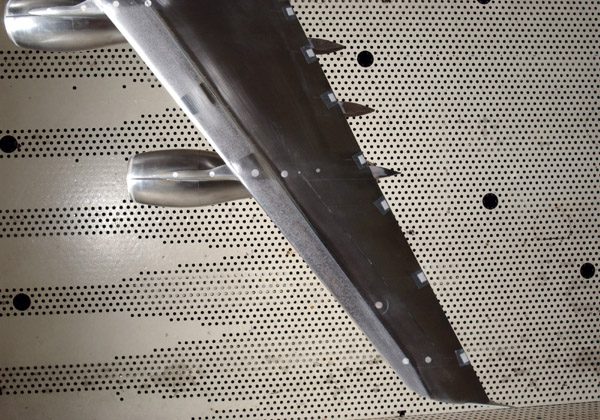
Oilflow Visualisation
Oilflow visualisation is a technique commonly used in aerodynamic research to enable surface flow patterns to be seen. ARA regularly applies this technique within the Transonic Wind Tunnel (TWT) and has automated systems to capture high-resolution stills and video for later analysis.
As the ARA Transonic Wind Tunnel operates over a large range from Mach 0.2 to Mach 1.4 we vary our oilflow technique to suit the test conditions. The mixture viscosity is adjusted to suit the different speed ranges. We can also choose whether to use different coloured oils to understand flow between different surfaces i.e. pylon to wing interference. Alternatively, we can use fluorescing pigments in the oilflow mixture which is excited when lit by Ultra-Violet light, this can often show finer detail on surface flows.

Particle Image Velocimetry
As part of a recent project to research flows in and around a civil cavity configuration, ARA developed a
As part of a recent project to research flows in and around a civil cavity configuration, ARA developed a Particle Image Velocimetry (PIV) system for its Transonic Wind Tunnel (TWT). The ARA PIV system is based around the LA Vision PIV system with a custom-designed seeding system from ILA (Intelligent Laser Applications).
The system is designed to be productive and flexible with translatable laser light sheet positions and the ability to measure in different orientations. Initial tests were performed with a clear working section, these trials proved the seeding quality and capacity as well as confirming the measurement capability. It also had the benefit of confirming the high flow quality of the ARA TWT. The next stage was testing multiple light-sheet positions at a range of Mach numbers for the ARA Civil Cavity Research Model. The following image shows a result from one of the two light-sheet positions tested.
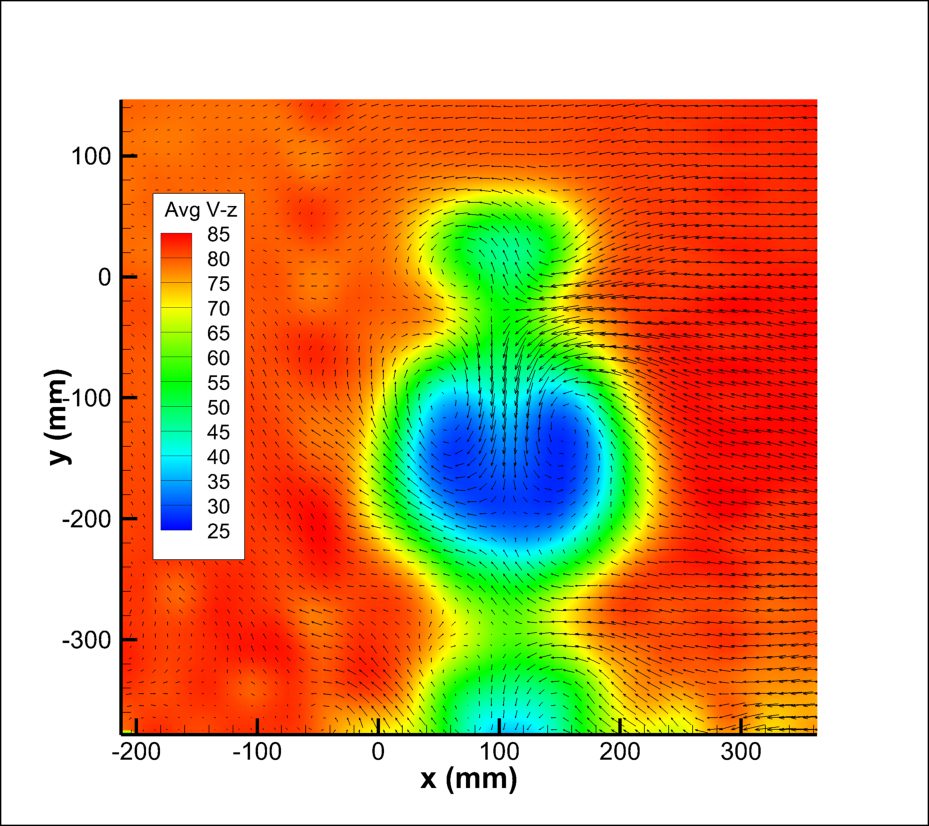
The system has also been used in other facilities at ARA, including the small scale transonic wind tunnel (Z4T), where boundary layer measurements were made in preparation for the ANACO project in the ARA’s main transonic wind tunnel.
Shadowgraph & Background Oriented Schlieren (BOS)
Within the Transonic Wind Tunnel (TWT) ARA operates a simple Shadowgraph system, which is quick and easy to set up at short notice. This is a useful extra tool for visualising shocks and recording them as either video or high resolution still images. Other facilities at ARA have highly sensitive Schlieren systems for this purpose but due to optical access restrictions, this is not possible within the TWT. However, Background Oriented Schlieren is a technique that can be used in the TWT as well as the small scale transonic tunnel (Z4T)
The following are images are examples from the ARA shadowgraph and BOS systems.
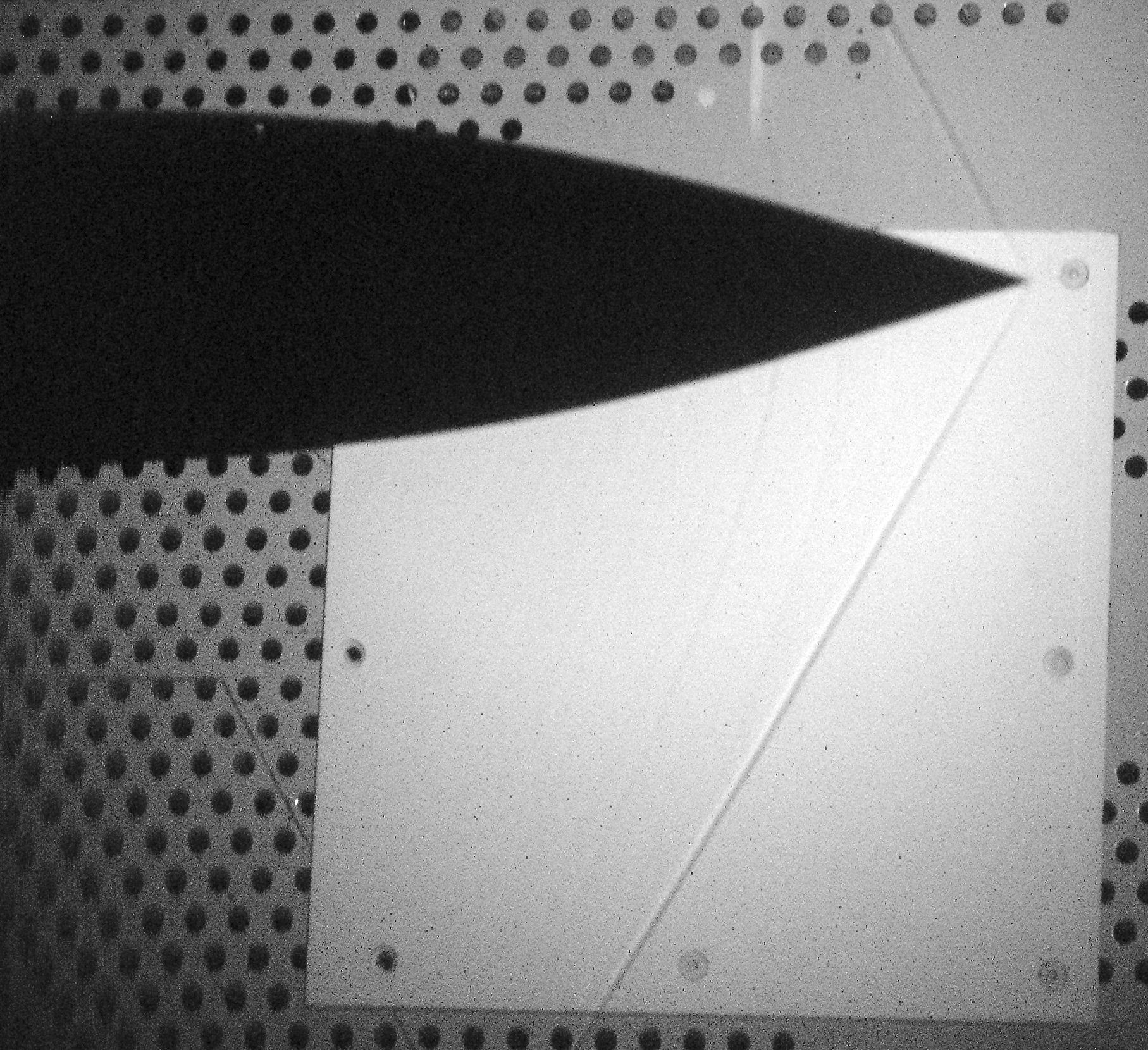
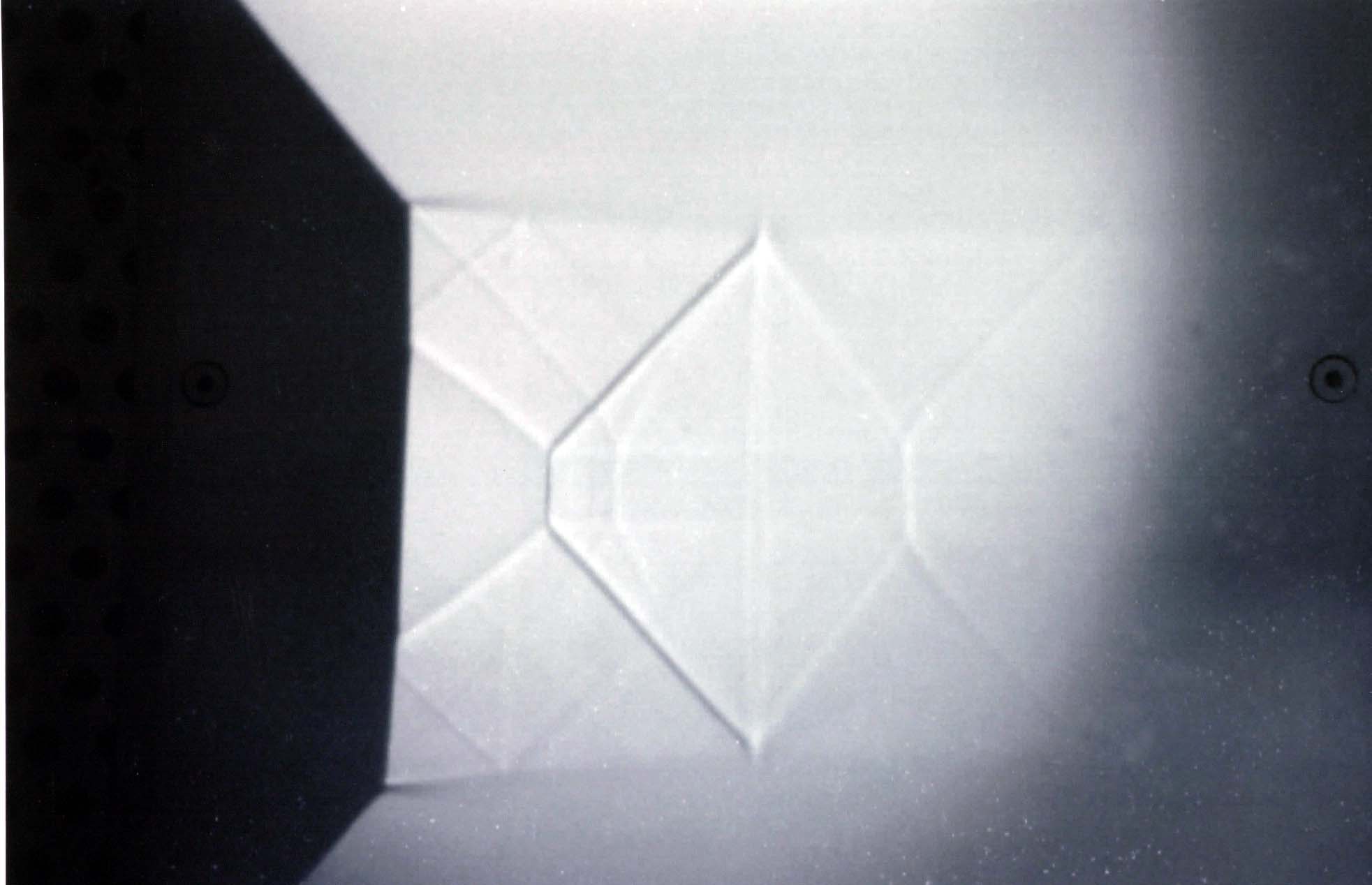
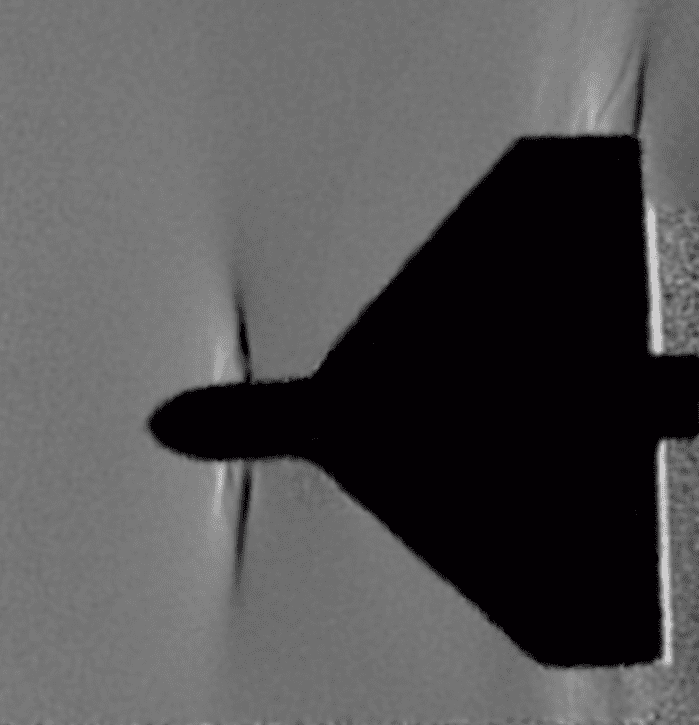
IR Thermography
Infra-Red Thermal Imaging (IR) is a useful tool in regular use at ARA. It is commonly used to analyse the efficiency and performance of the large motors that serve the Transonic Wind Tunnel (TWT) and is increasingly being used during model tests in the TWT to gather data on the surface temperature of the models under test.
One recent example was the use of this technology alongside Temperature-Sensitive Paint (TSP) to visualise surface flow features. Due to the highly reflective nature of most wind tunnel models IR will require a thin layer of paint to enable the IR cameras to detect the surface temperature and for specialist transition investigation models acrylic panels are designed into the model to improve the IR effectiveness.
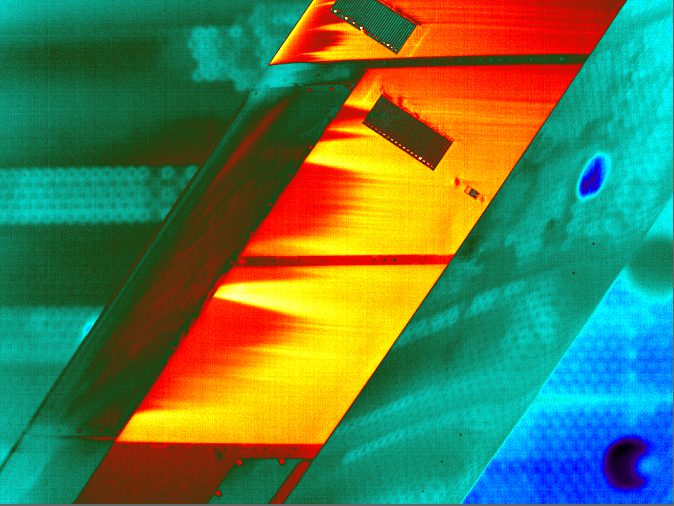
Temperature Sensitive Paint
As with the ARA Lifetime Pressure-Sensitive Paint (PSP) system, the Temperature-Sensitive Paint (TSP) system is based around the paints and associated technologies from the US company ISSI (Innovative Scientific Solutions Inc).
As its name suggests this paint is used to detect the temperature at the model surface, which is useful for many applications. The main use for this paint at ARA is for the detection of the position of transition from laminar to turbulent flow, as there is a small temperature step at this point. Traditionally ARA uses the Acenaphthene sublimation technique for this but the advances in the TSP techniques have made TSP an extremely useful tool for obtaining accurate and quantifiable data from this type of testing. This has been particularly useful in recent laminar flow investigations performed at ARA, including the development of the laminar flow control model, results from which can be seen here.
